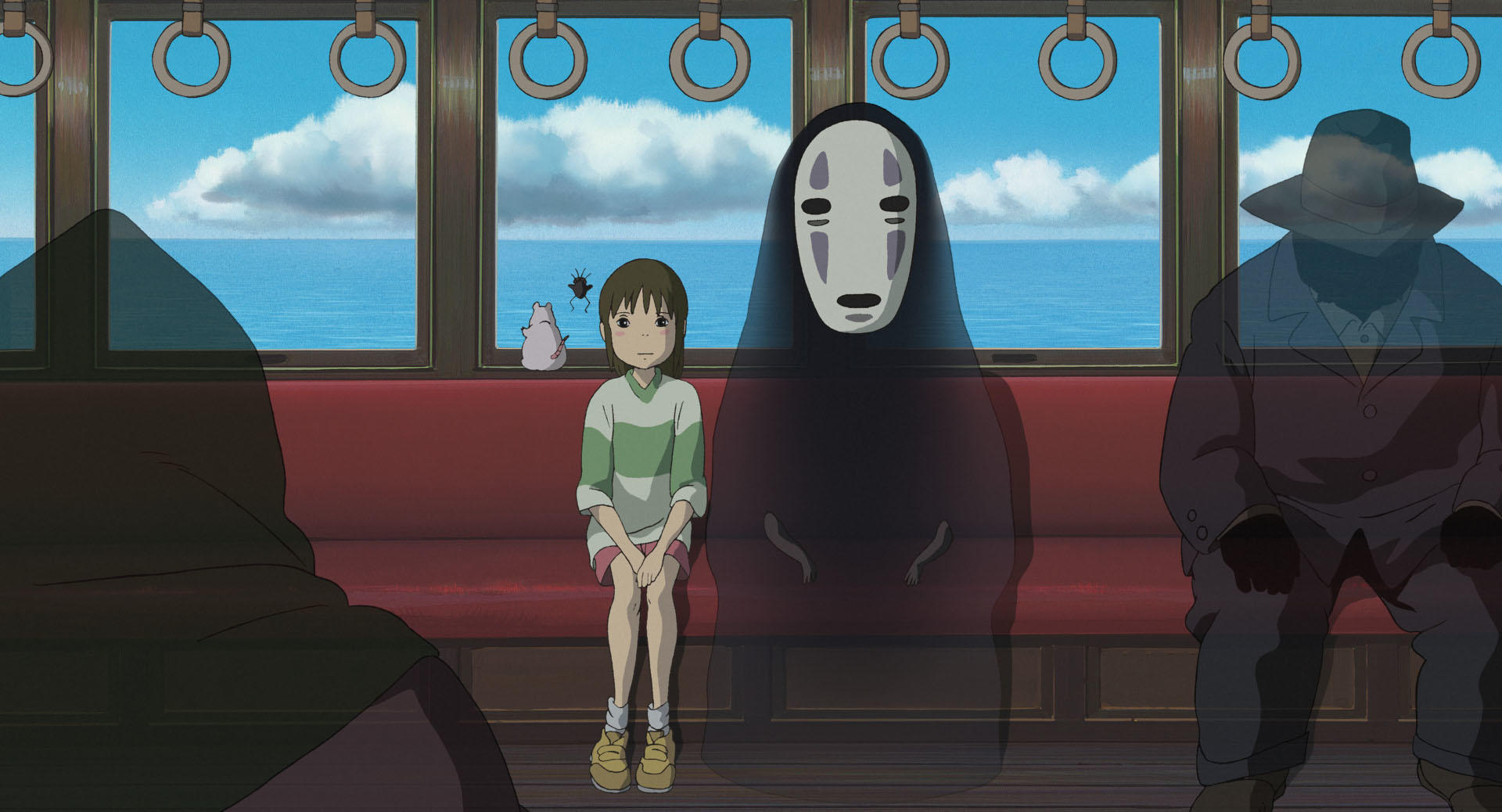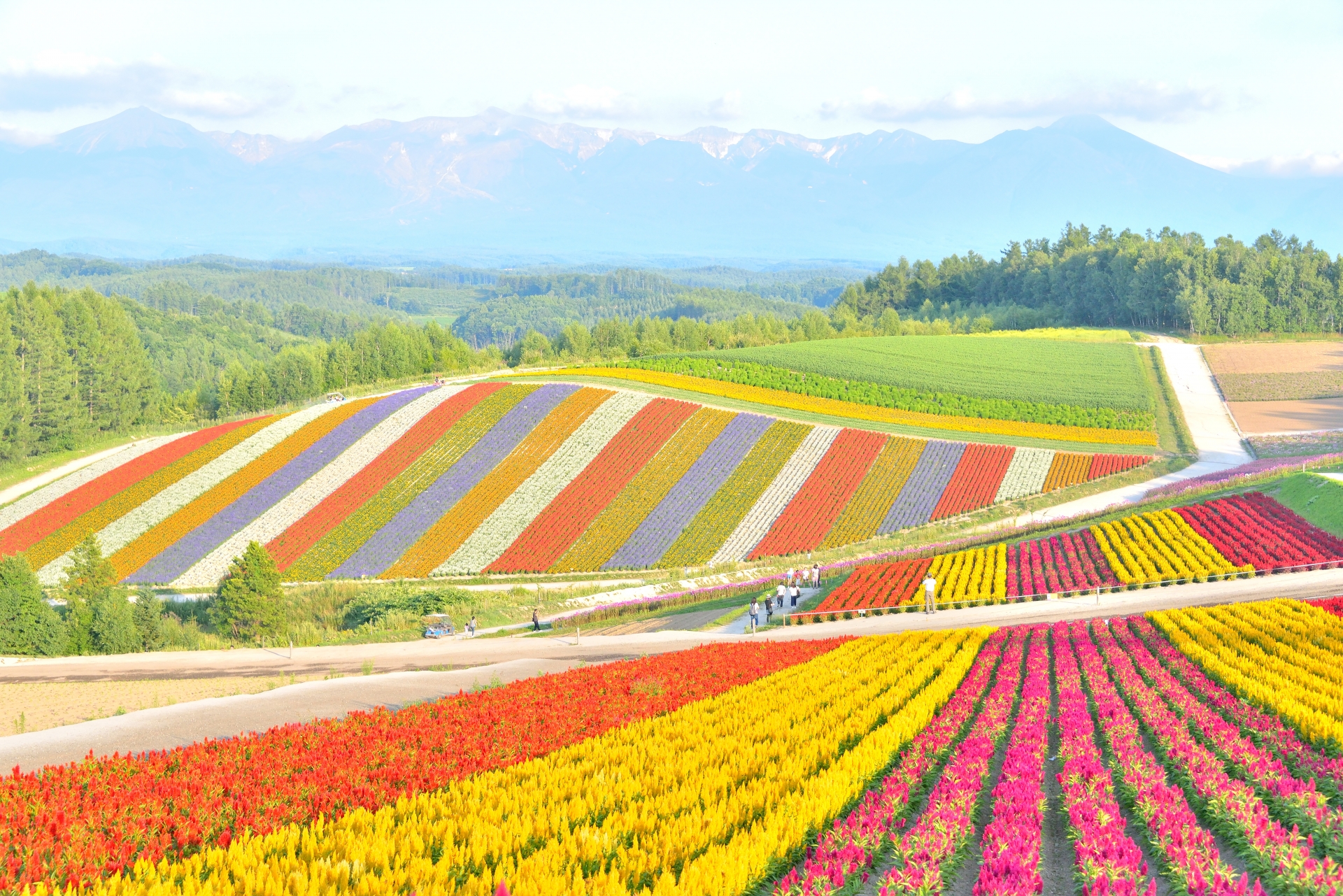
Jennifer Tijssen has loved Japanese culture for as long as she can remember. It started out with children’s animation shows but soon branched out to include all that this lovely country has to offer. Having studied Japanese language and culture in university, she came to Japan in 2022 fully equipped to experience the country. Her interests include cuisine, design, sociology and flora and fauna.
You might have come across the word wabi-sabi before, which is a Japanese expression referring to an aesthetic concept of perceiving beauty in imperfection. That may sound a bit vague, so let’s dive into the ideas behind wabi-sabi, look at some famous historical figures who helped shape it and talk about the role it plays in modern-day Japanese culture.
Let’s start by dissecting the expression itself. Wabi (侘, わび) and sabi (寂, さび), the compounds that make up this word, were originally used as separate concepts. The former word denotes the beauty of the simple and the rustic, while the latter holds the meaning of deterioration by the passing of time. Both terms were used in relation to living a reclusive life in the countryside. Together, however, they indicate a concept of appreciation of the simplistic and impermanent aspects of life.
The History of Wabi-Sabi
The concept of wabi-sabi has been a part of Japanese culture for centuries. It has its roots in Zen Buddhism, which was introduced in Japan in the 7th century by travellers coming back after visiting mainland Asia. Apart from Zen Buddhism, other important ideas that came from mainland Asia during this period were the Chinese script (modern kanji), tiny trees in small containers (now known worldwide as bonsai) and the art of ikebana(flower arrangement). Zen Buddhism evolved into its currently known form in the 12th century and quickly gained a wide following, popularizing the ideas of simplicity and impermanence.
Influential Figures of Wabi-Sabi
Sen no Rikyu
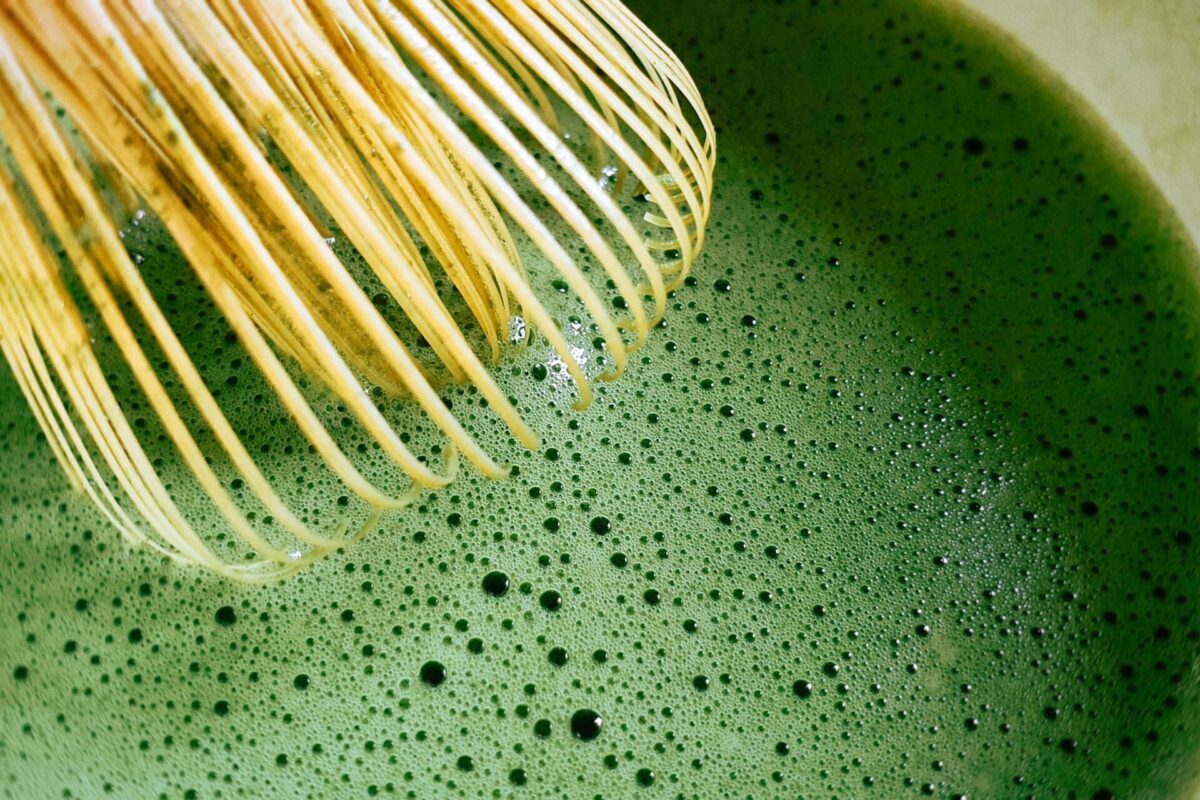
A figure central to the development of the wabi-sabi concept is Sen no Rikyu (1522-1591). He is considered to be the founder of the Japanese tea ceremony as we know it today, evolving the practice to focus on rustic simplicity rather than showing off expensive tea bowls. His influence was significant enough to earn him the position as tea master to major historical figures like feudal lords Oda Nobunaga and Toyotomi Hideyoshi, the latter eventually ordering Sen no Rikyu to commit ritual suicide despite being one of his confidants. Despite this tragic ending, Sen no Rikyu’s ideas on simplistic and austere aesthetics helped shape the Japanese tea ceremony and in a broader sense also Japan’s overall perception of aesthetics.
Matsuo Basho
Another Japanese historical figure that has left their fingerprints all over the concept and popularity of wabi-sabi is Matsuo Basho (1644-1694), arguably the most famous haiku poet in history. He wrote the following legendary haiku that many people will be able to recognize:
furu ike ya / kawazu tobikomu / mizu no oto
an old pond / a frog jumps in / the splash of water
As seen in this haiku, his writing encapsulates a focus on beauty in simple, everyday occurrences. He writes about the natural scenes around him and captures the feeling of them with simple elements. Even though he used to make a living as a teacher in Edo (modern Tokyo), he chose to leave urban life behind and wander rural Japan, finding inspiration in the rustic wilderness.
Wabi-Sabi Temples
Ryoanji Temple Rock Garden
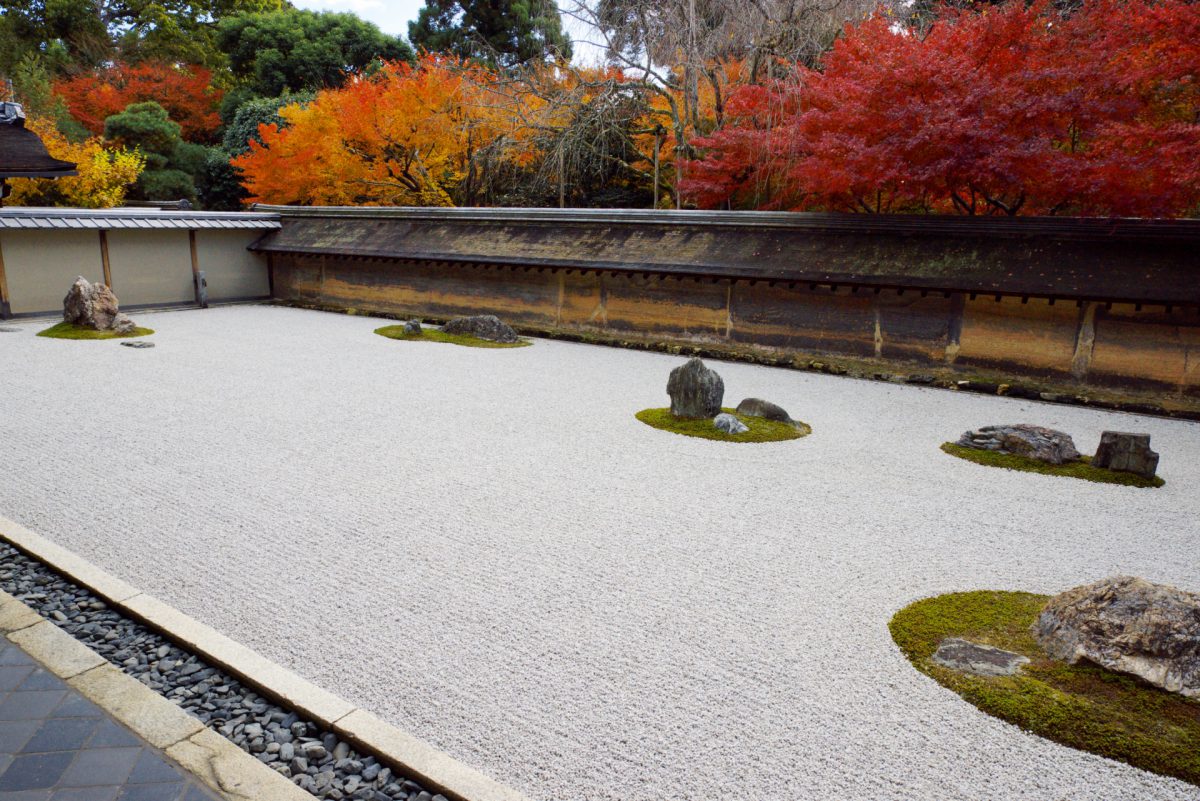
When thinking of Zen Buddhism, most people will think of zen gardens – carefully stylized and maintained arrangements of rocks, moss, pruned trees and gravel. The gravel is often raked to form a pattern that represents water ripples. Rather than mimicking the reality of nature, zen gardens were created at Buddhist temples to capture the simple essence of nature, suspended in time, which helped buddhists in their zen meditations. The most famous zen garden today is the Ryoanji Temple rock garden, believed to have been established in the late 15th century. The meaning behind the rock formations in the garden is a matter of dispute, but they are arranged in such a way that they cannot be viewed all at once from any angle. Of the 15 rocks, only 14 are visible at a time – and it is said that the 15th can only be seen by reaching enlightenment. The wall behind the rocks also holds special meaning. The clay used to make it has been stained with tones of brown and orange over time, which reminds viewers of the “sabi” element in wabi-sabi. The rock garden itself embodies “wabi” through its simple and rustic representation of the essence of nature. Together, the Ryoanji Temple garden and wall form a manifestation of the wabi-sabi aesthetic.
Saihoji Temple
The first temple to embrace the zen garden idea is considered by experts to be Saihoji Temple, also known as Koke-dera or Moss Temple, established in the 14th century. The upper garden of the temple features three rock “islands”, one that resembles a turtle swimming in moss, one flat meditation rock and a rock formation that resembles a waterfall. The rocks are surrounded by moss, even though the original garden plan did not include it. Several centuries after its foundation, moss grew when the garden was left unattended and is now the most famous feature of the temple. A profound example of appreciating the simple beauty found in nature.
Kintsugi
Lately, the practice of kintsugi has seen a rise in popularity worldwide, and for good reason. The practice itself is mindful, and the results are beautiful. Kintsugi (金継ぎ), literally meaning “to mend with gold”, is the practice of repairing broken ceramics with lacquer dusted with gold powder. This process highlights and showcases all the places the piece was damaged, instead of hiding them as would usually be expected when repairing something. In fact, the idea of kintsugi is that there is beauty to be found in an object’s damage. The practice finds its origin in Zen Buddhism and embodies wabi-sabi ideals profoundly.
According to a famous story, Sen no Rikyu attended a dinner party on one of his travels. The host was very excited to show Sen no Rikyu an expensive vase he owned. However, Sen no Rikyu paid no attention whatsoever to the vase and instead admired the foliage outside the window. After Sen no Rikyu had left, the host was so frustrated with the events of the evening that he smashed his precious vase. The other guests hurried to gather the shards and worked to repair it by the practice of kintsugi. When Sen no Rikyu next came to visit he saw the vase with its golden veins, and said, smiling knowingly: “Now, it is magnificent”.
Wabi-sabi today
You may already know about Japan’s craze for the cherry blossom season. For two precious weeks (or sometimes even less) the sakura trees bloom, covering the country in a blanket of pink and white. The Japanese flock to parks and river banks to marvel at the flowers’ beauty before they vanish not to appear for another year. The same sort of ritual occurs in autumn when the leaves change color. The transient nature of these phenomena is said to remind one of the fleeting nature of life itself.
Let wabi-sabi inspire you to embrace humility, simplicity and impermanent natural occurrences, just as it continues to inspire the Japanese in countless ways.
Japan Wonder Travel Tours
Japan Wonder Travel is a travel agency that offers guided tours throughout Japan.
From private walking tours to delicious Food and Drink tours, we can help you organize the best tours just for you! If you want to explore Japan and learn more about the history and backstories of each area you are visiting, our knowledgeable and friendly English speaking guides will happily take you to the best spots!
In addition, we can provide you with any assistance you may need for your upcoming trip to Japan, so please feel free to contact us if you have any questions or need some help!
▶Tokyo Tsukiji Fish Market Food and Drink Tour
Explore the most lively and popular fish market in Tokyo and try some of the local’s favorite street foods and sake with one of our friendly and knowledgeable English speaking guides!

▶Tokyo 1–Day Highlights Private Walking Tour (8 Hours)
There’s no better way to explore an area than taking a tour with a knowledgeable local guide. You will have the chance to learn about the history and interesting background stories of Tokyo, as well as discover some hidden gems which can be hard to do without a guide.
▶Mt. Fuji Day Trip Bus Tour from Tokyo
Experience the breathtaking views of Mt. Fuji by visiting the highlights of the area on our guided sightseeing bus tour! Departing from Shinjuku in central Tokyo, you can travel comfortably to all of the best spots in the area by bus.
▶Kyoto Private Full Day Walking Tour
On this full-day private tour of Kyoto, you will be able to see the highlights of Kyoto in just one day and at the same time develop a deeper understanding of both the culture of the area and Japan as a whole.
Follow us on Instagram, Facebook, Twitter, and TikTok for more travel inspiration. Or tag us to get featured!
Happy traveling!




